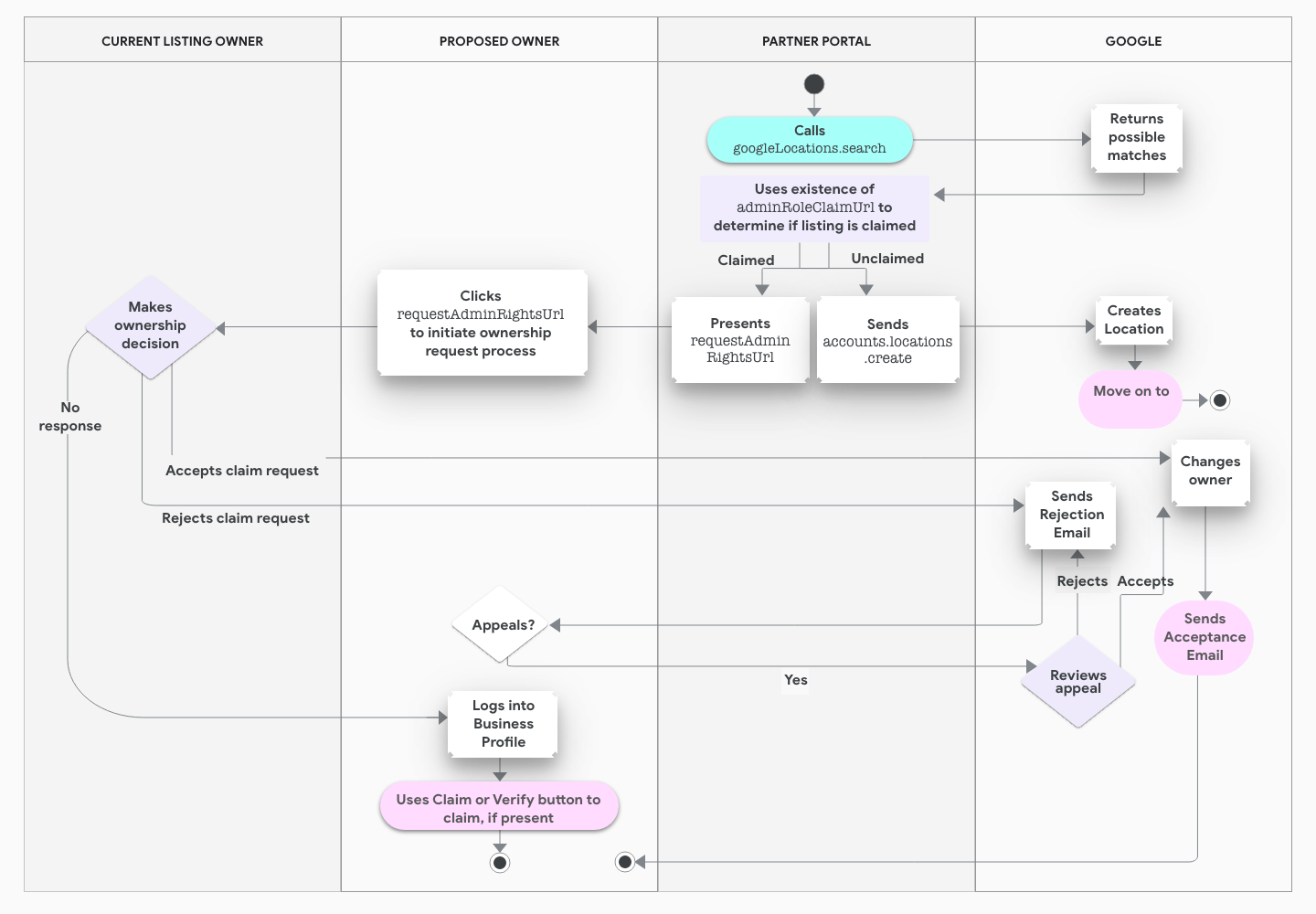L'API GoogleLocations ti consente di sapere in anticipo se una località è stata rivendicata in Profilo dell'attività. In questo modo, se la stazione di ricarica è stata rivendicata, puoi richiedere immediatamente l'accesso. Inoltre, se gestisci account sottoposti a verifica collettiva, puoi selezionare in modo più accurato le potenziali corrispondenze in anticipo ed evitare la creazione di località duplicate.
L'endpoint dell'API restituisce un URL che indica se una sede è già stata rivendicata. Se è stato rivendicato, lo stesso URL ti consente di avviare la procedura di richiesta di accesso.
L'immagine seguente fornisce una panoramica della procedura per ottenere la proprietà di una stazione di ricarica.

I passaggi che seguono ti consentono di utilizzare l'API GoogleLocations:
- Raccogliere i dati sulla posizione dal commerciante.
-
Chiama l'endpoint
googleLocations.search. Fornisci i dati sulla posizione nel corpo della chiamata. In alternativa, puoi fornirla in una stringa di query, in modo simile a quanto farebbe un utente nella Ricerca o in Maps. Ad esempio, "Starbucks 5th ave NYC".L'API restituisce un elenco di località potenzialmente corrispondenti e informazioni su ciascuna località, come
locationNamee indirizzo. - Seleziona la località corrispondente alla tua posizione. Se non ci sono corrispondenze, chiama
accounts.locations.createe vai al passaggio 5. -
In base allo stato di
requestAdminRightsUrlnella risposta, esegui le seguenti azioni:- Se
requestAdminRightsUrlesiste, la scheda è di proprietà di un altro utente. Invita il commerciante a visitare l'URL per avviare una richiesta di accesso e proprietà della sede esistente in Profilo dell'attività. - Se
requestAdminRightsUrlnon esiste, chiamaaccounts.locations.createe crea una nuova scheda che verrà verificata in un secondo momento.
- Se
- Se hai creato nuove schede nell'ambito di questa procedura, puoi utilizzare le API di verifica per iniziare la verifica delle schede. Per saperne di più, consulta Gestire la verifica.
